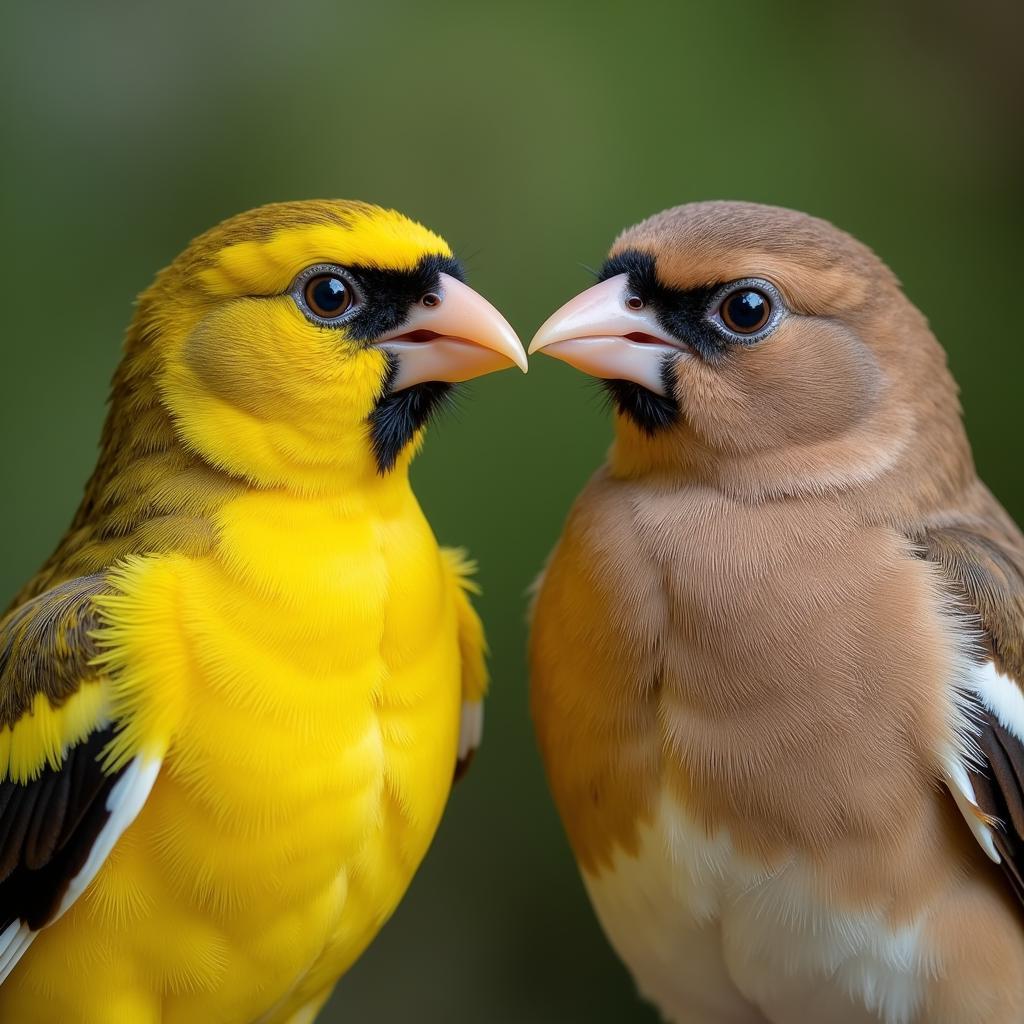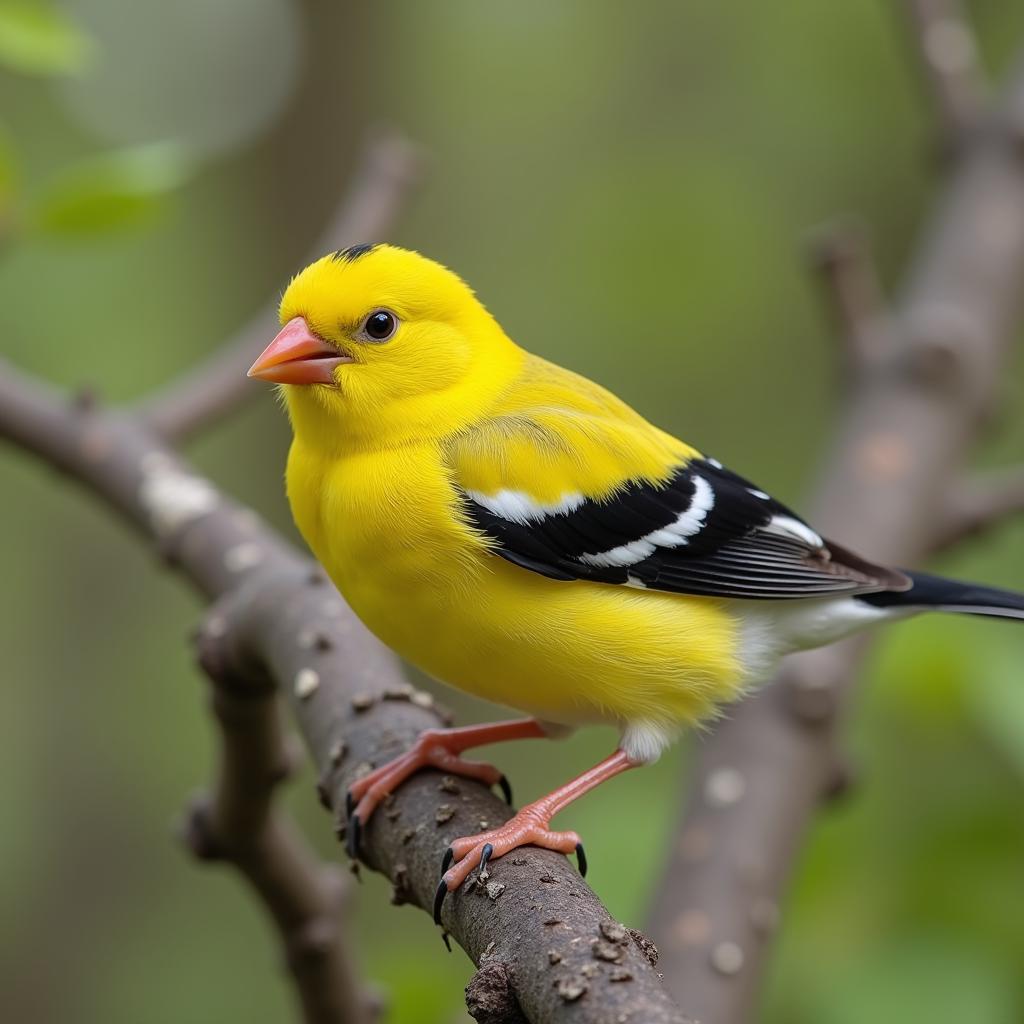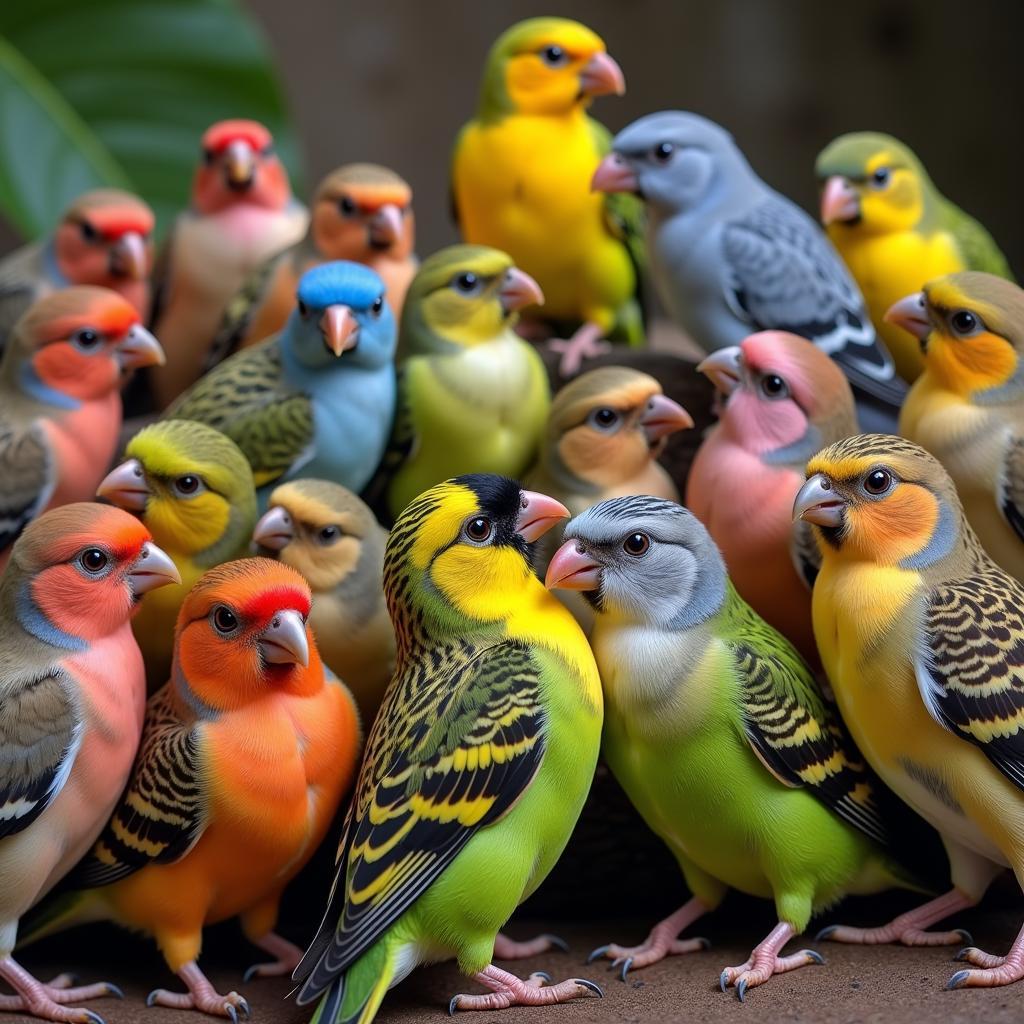When we think of finches, the image of a vibrant yellow bird often comes to mind. But the world of finches extends far beyond this single hue. Finches boast a surprisingly diverse palette, with colors varying dramatically between species and even within the same species depending on sex, age, and season.
 Male and Female Finches
Male and Female Finches
Deciphering Finch Colors: More Than Meets the Eye
While the bright yellow of the American Goldfinch might be iconic, finches display an array of colors including reds, oranges, greens, blues, and browns. These colors are not merely decorative; they play crucial roles in the survival and reproduction of these fascinating birds.
The Role of Color in the Finch World
- Camouflage and Protection: Subtle shades of brown, green, and gray provide excellent camouflage for many finch species, helping them blend seamlessly into their surroundings and avoid predators.
- Attracting a Mate: Vibrant colors, particularly in males, often signal good health and genetic fitness, making them more attractive to potential mates.
- Species Recognition: Each finch species has unique color patterns that help them identify their own kind, especially during breeding season when competition for mates and resources is high.
 American Goldfinch Perched on a Branch
American Goldfinch Perched on a Branch
From Drab to Dazzling: Finch Color Variations
One of the most fascinating aspects of finch coloration is its variability. Here are some factors that influence the color of a finch:
- Species: Different finch species have evolved distinct color palettes adapted to their environments and lifestyles. For instance, the Purple Finch, true to its name, displays shades of purplish-red, while the House Finch exhibits a more subdued brown and red plumage.
- Sex: In many finch species, males sport brighter, more striking colors than females. This sexual dimorphism is often driven by female mate choice, with females preferring males that exhibit signs of good health and genetic quality through their vibrant plumage.
- Age: Juvenile finches typically have duller plumage than adults, allowing them to blend in better with their surroundings and avoid potential threats. As they mature, their colors become more vibrant, signaling their readiness to breed.
- Season: Some finch species, like the American Goldfinch, undergo a seasonal molt that transforms their plumage. During the breeding season, the male American Goldfinch boasts brilliant yellow feathers, which fade to a duller olive-brown in winter. Do yellow finches change color in the winter? This seasonal color change is linked to hormonal shifts associated with breeding.
 Group of Different Finch Species
Group of Different Finch Species
Beyond Basic Colors: Intricate Patterns and Markings
The beauty of finch plumage extends beyond simple color variations. Many species exhibit intricate patterns and markings that further enhance their visual appeal and aid in species recognition.
For instance, the Zebra Finch, a popular pet species, displays black and white barring on its wings and tail, resembling the stripes of its namesake. The male House Finch, on the other hand, has distinctive reddish streaks on its breast and forehead.
Exploring the World of Finch Colors
From the brilliant yellow of the American Goldfinch to the subtle browns and greens of camouflage, finch colors offer a captivating glimpse into the interplay between evolution, adaptation, and aesthetics. By understanding the factors that influence finch coloration, we can deepen our appreciation for these fascinating creatures and the vital role color plays in their lives.

